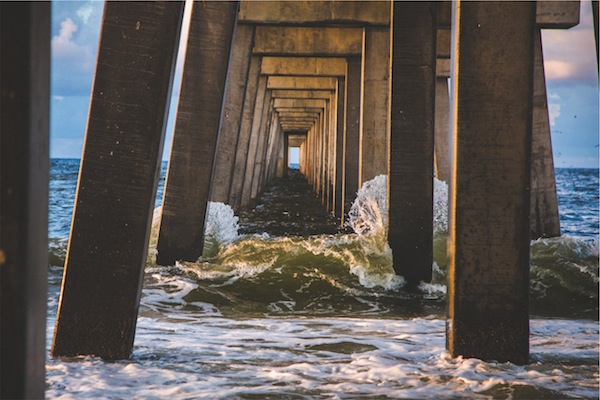
https://unsplash.com/keithmisner
Queensland’s weekend election saw the largest turnaround in Australian political history. A landslide against the ALP at the last election, now one back their way this time spells an electorate concerned with the economic vision for their future. With much of the Queensland campaign focused on the Newman privatisation agenda, the election outcome paints a warning as to the political amenity of the neo-liberal agenda to privatise, pollute and exploit the people.
This ricochets into the upcoming NSW election, where Premier Mike Baird has staked his future on a controversial electricity privatisation. He is claiming a $20 billion dividend, with $13bn from the sale, $2bn from the Federal Government’s infrastructure recycling incentives and a surprising $5bn from the interest earnt on the sale. He has announced plans to reduce the infrastructure bottleneck immediately but in order for the $5bn interest to be earnt, the money is required to be left in the bank. The figures don’t add up.
Victoria’s new Premier Daniel Andrews is also proposing to privatise one of Victoria’s last public assets, the Port of Melbourne. With NSW’s recent port privatisations raising $5.1bn, there is hope that the nation’s busiest port will raise up to $6bn. Late last week an auction timeline was promoted to likely infrastructure investors.
The danger with the Port privatisation is the 99 year lease is based on a ‘fee simple’ payment. This is a one-off payment. If the Port is to be privatised at all, a fairer system would see a yearly lease valuation required. An annual lease payment based on this valuation would ensure the expected future value of the Port is shared between public and private interests. The state would enjoy a guaranteed income stream to allocate to infrastructure efforts. By not borrowing for the lump sum payment, the private owner could enjoy lower debt overheads.
However, the privatisation of the Port will see higher operational costs passed onto the shipping industry as the new private owners seek to deliver dividends to shareholders, meet their debt overheads and match private sector CEO wages. The effectiveness of such privatisations continues to be debated as a cost-benefit outcome.
The larger issue is how to ensure greater sovereignty for governments, to finance the infrastructure more effectively. How did Governments fund such large projects in the past? Government bonds played a strong part, but now under the watchful eye of ratings agencies such as Standard & Poor’s, this is deterred. The iteration is that public debt is bad, private debt better. Alongside healthy consultancy fees in the deal making, privatisation delivers higher interest earnings to banks.
The Andrew’s government has openly talked about the need to utilise value capture as a financing mechanism. We applaud this. The $6 billion Port of Melbourne privatisation sounds a big number, but when compared to the potentials behind value capture, the figure is minor. Importantly, the public policy results are more effective.
Land values in Victoria increased by $107.5bn in the year to June 2014 (ABS 5204, Table 61). In NSW, land increased by $202.9bn. Nationally for the year, land values increased by $418.3bn – almost enough to fund all three levels of government. A value capture system could see a portion of these windfall gains funding the infrastructure that makes this land more valuable. This would act as a closed loop, also keeping some downward pressure on land costs.
The Andrews government could avoid falling into lock-step with the neo-liberal privatisation agenda with some visionary economic thinking. The new government should at least educate the public of the immense economic value they create for landowners. From the public infrastructure we build to the community development we are all engaged in at some level, the public creates the economic environment for such immense windfall gains to be enjoyed by landowners.
The privatisation agenda is alluring for political parties because neither side are willing to address the immense land bubble western society seems so enamoured with. But with every year and the widening of the inter-generational wealth gap continuing, a frustrated electorate is looking for politicians who can take on the vested interests of landlords, financiers and monopolies to deliver a fairer world.



Corrupt governments have sold off nearly every public asset and yet Australia is going into more and more debt. Something is not right. We will never find any politician that will take on the same groups mentioned in the last paragraph. After all, these groups payed for their election campaigns. Worse, voters will still vote the same political parties in and out of office. Australia is doomed.
On the Federal front, Tony Abbott would prove his Liberal values in a second if he was! However he will probably continue to fumble between intergenerational debts and regressive sales taxes, all the while blind to why the problems mount up.